Some species of greatest conservation need (SGCN) in Wisconsin require a forested landscape diverse in structure, composition, function and complexity. Both young forests with particular habitat characteristics and old forests with more complex structures and species composition are necessary to meet the life cycle and habitat needs of SGCN species. This allows those species to grow and maintain their populations into the future. Continue reading “Using Forests to Protect Species of Greatest Conservation Need”
#NASF100
Ecological Landscapes of Wisconsin
Wisconsin forests are incredibly diverse in species composition and structure, mainly due to glaciation that occurred until 11,500 years ago across much of the state. Glaciation in Wisconsin reached its maximum extent nearly 21,000 years ago.
To help guide management decisions and considerations, Wisconsin is divided into 16 ecological landscapes defined by the vegetation, climate, geology and hydrology in each ecological unit. Information about each ecological landscape is available on the DNR website in the landscapes topic.
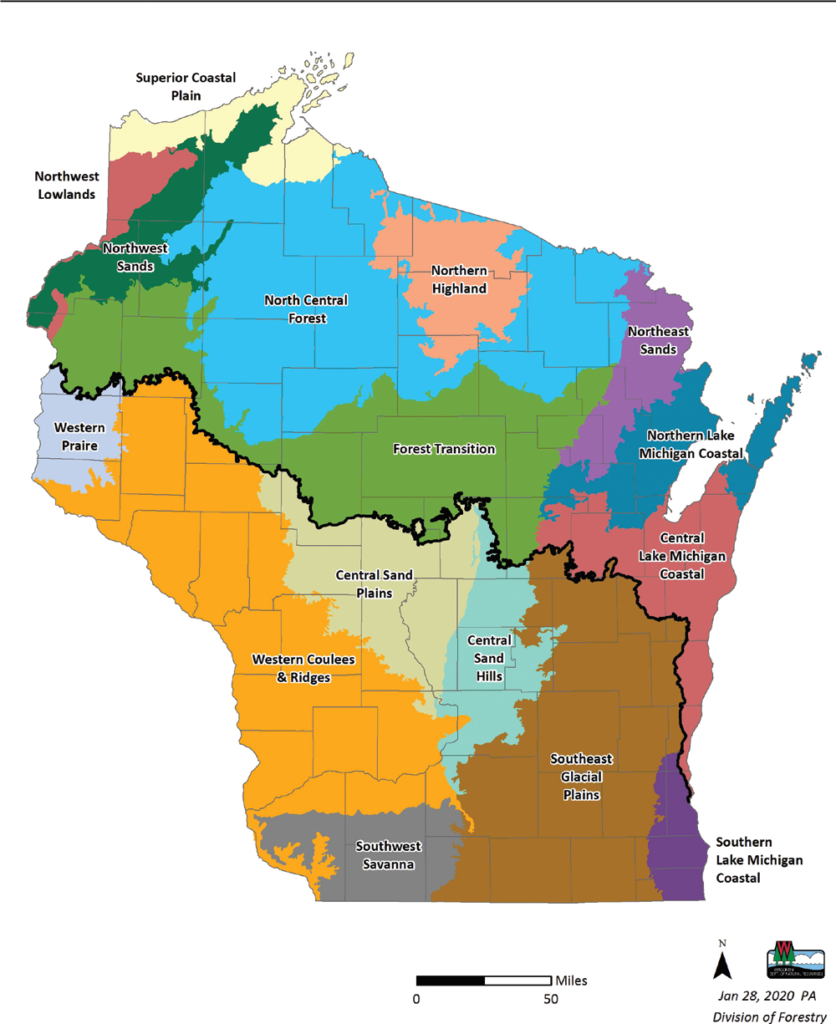
Ecological Landscapes of Wisconsin. Credit: Wisconsin DNR
Wisconsin Silviculture Trials
The Wisconsin Silviculture Trials Directory was created in 2002 for foresters to document silviculture trials and share results and experiences with their peers. It is a way of documenting non-research trials in applied forestry. A trial site often visited during training sessions is the Nebish Lake oak burn. Here a forester established an oak shelterwood in 2008, followed by a prescribed burn in 2011. The results showed that fire could set back competition while creating a favorable seedbed for oak regeneration.

Nebish Oak Shelterwood burn with comparison of the left side that was burned and right side that was not burned. Credit: Wisconsin DNR
Forest Growth, Removal And Mortality
Forest growth, removal and mortality are indicators of forest productivity. Each forest type in Wisconsin differs in productivity based on many factors such as silvics, demand for products and overall management. Recent data from the U.S. Forest Service shows that aspen, being a short-lived species, currently has the highest mortality rate of the top ten species while eastern white pine is increasing in growth and volume.
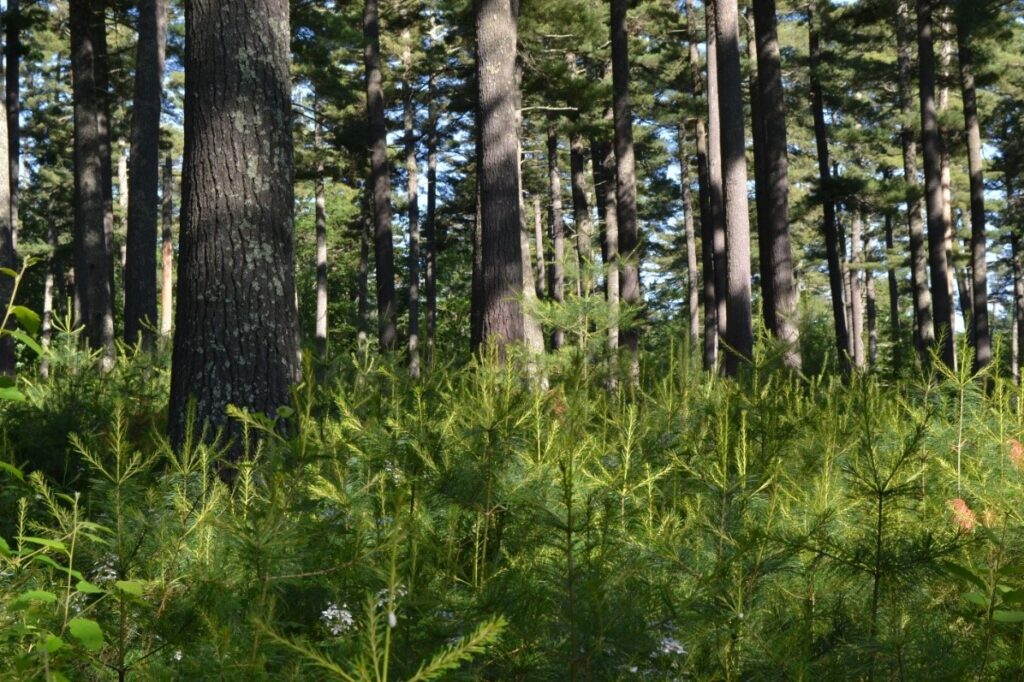
White pine regeneration under a managed old-growth white pine at Uhrenholdt Demonstration Forest. Credit: Wisconsin DNR
Forestry Best Management Practices For Water Quality
Forests play an important role in maintaining, protecting and enhancing soil and water quality. With the correct application of Best Management Practices for Water Quality, foresters can protect soil and water to ensure healthy forests and habitats.
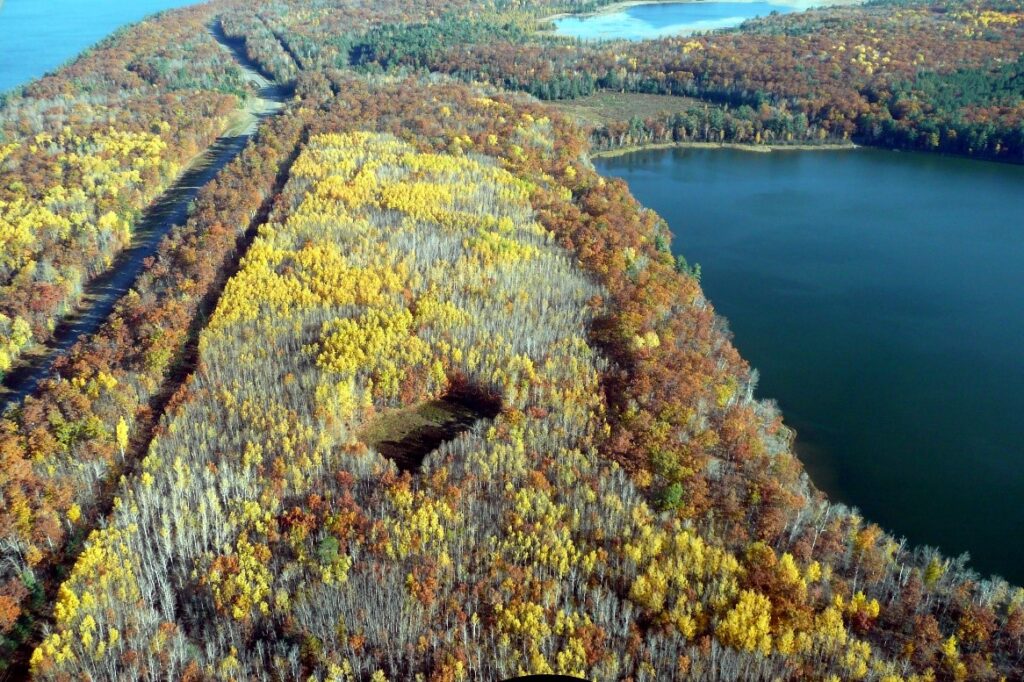
Aerial photo of Little John lake near Boulder Junction with a protective riparian management zone. Credit: Wisconsin DNR
Managing For Old-Growth Forests
Old-growth forests are unique ecosystems that were historically abundant across the forested regions of Wisconsin but have now dwindled to about 1% of their original presence. Realizing the importance of old-growth forest structure and composition, the Wisconsin Department of Natural Resources (DNR) and U.S. Forest Service (USFS) partners initiated a study in 2004 to look at silviculture methods to maintain and enhance old-growth characteristics. The Managed Old Growth Silviculture Study (MOSS) continues today on public lands in northern Wisconsin including the Flambeau River State Forest, the Northern Highlands – American Legion State Forest and the Argonne Experimental Forest (located within the Chequamegon – Nicolet National Forest). The main goal of this study is to develop forest management techniques that accelerate the development of structural and compositional complexity in second-growth northern hardwoods.
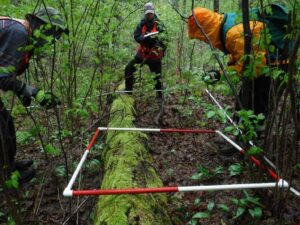
Wisconsin DNR forest research crew collecting old growth data. Credit: Wisconsin DNR
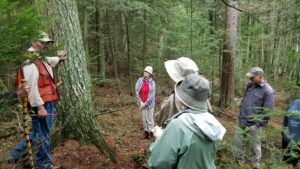
A forester explains the values of old growth in a Hemlock stand near Woodruff. Credit: Wisconsin DNR
Dominant Forest Types
Wisconsin’s dominant forest type group by acreage is oak/hickory (26%), followed by maple/beech/birch (22%). Oak is particularly important as it is used for quality forest products such as furniture and wildlife rely on mast (seed) production for food.
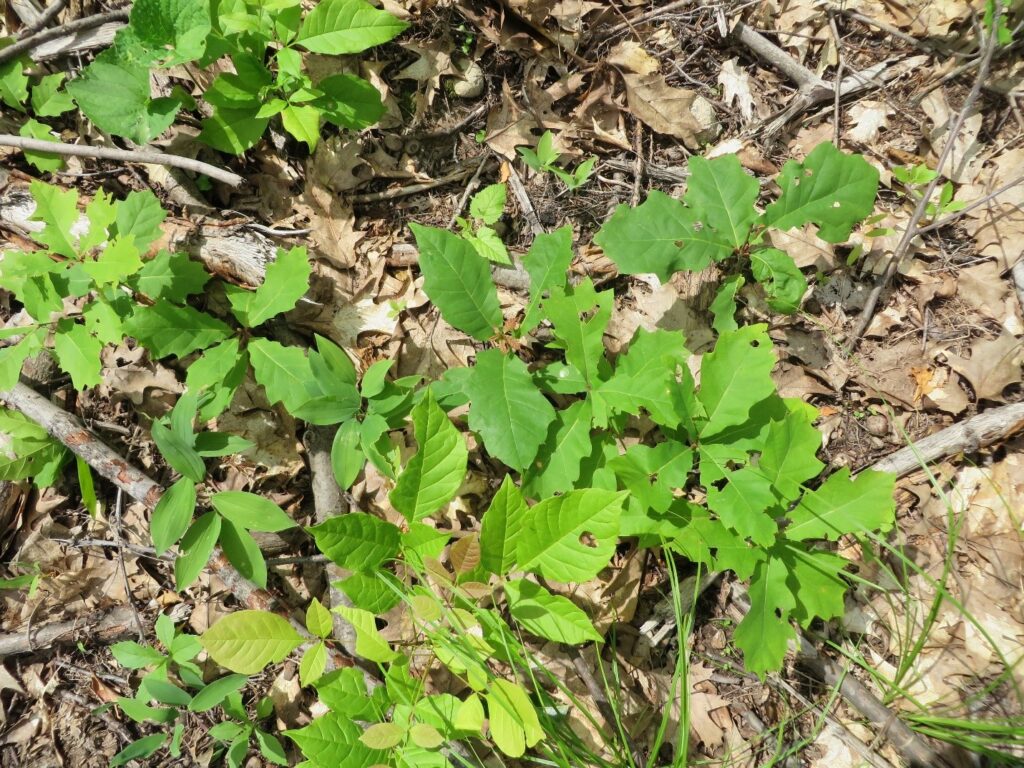
Red Oak regeneration with white ash. Credit: Wisconsin DNR
The Forestry Bubble
The middle-aged bubble does not only pertain to the baby boomer generation. Wisconsin forests are experiencing this age phenomenon as well. Wisconsin forest data shows a significant bubble of acreage in the middle age class (60-80 years old) with lesser amounts in the very young and very old age classes. This middle age bubble can be attributed in part to the cutover period when many of these forests originated.
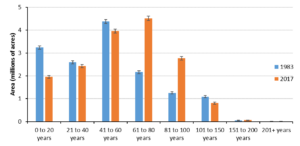
Total acreage of timberland between 1983 and 2017 distributed by stand age class. Error bars represent the 68% confidence interval. Source: Forest Inventory and Analysis, 2017.
Forests Upon Forests
Wisconsin is one of the top 25 forested states in the nation by acreage and volume. Forested land occupies about 17 million acres of Wisconsin’s nearly 37 million acres, according to data from the United States Forest Service in 2019.
Forest Characteristics, Ecology And Management In The Statewide Forest Action Plan
The success of sustainable forest management starts with a solid plan. The United States Department of Agriculture (USDA) requires each chief state forester to develop a statewide action plan every ten years. The Wisconsin plan, developed in 2020, reflects on lessons learned from the past to prepare for future challenges.
The next 12 posts are related to the “forest characteristics, ecology and management” section of the plan. Goals in this section include providing connectivity between forest patches, as well as increasing the quality and scale of forested habitat for many forest-dependent species.
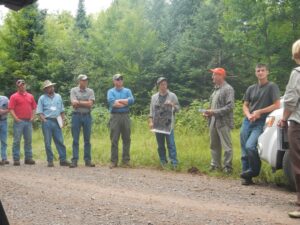
Wisconsin DNR Forestry meeting with stakeholders at Caroline Lake, Ashland County. A wide variety of forestry partners collaborated on the preparation and implementation of Wisconsin’s Statewide Forest Action Plan. Credit: Wisconsin DNR
